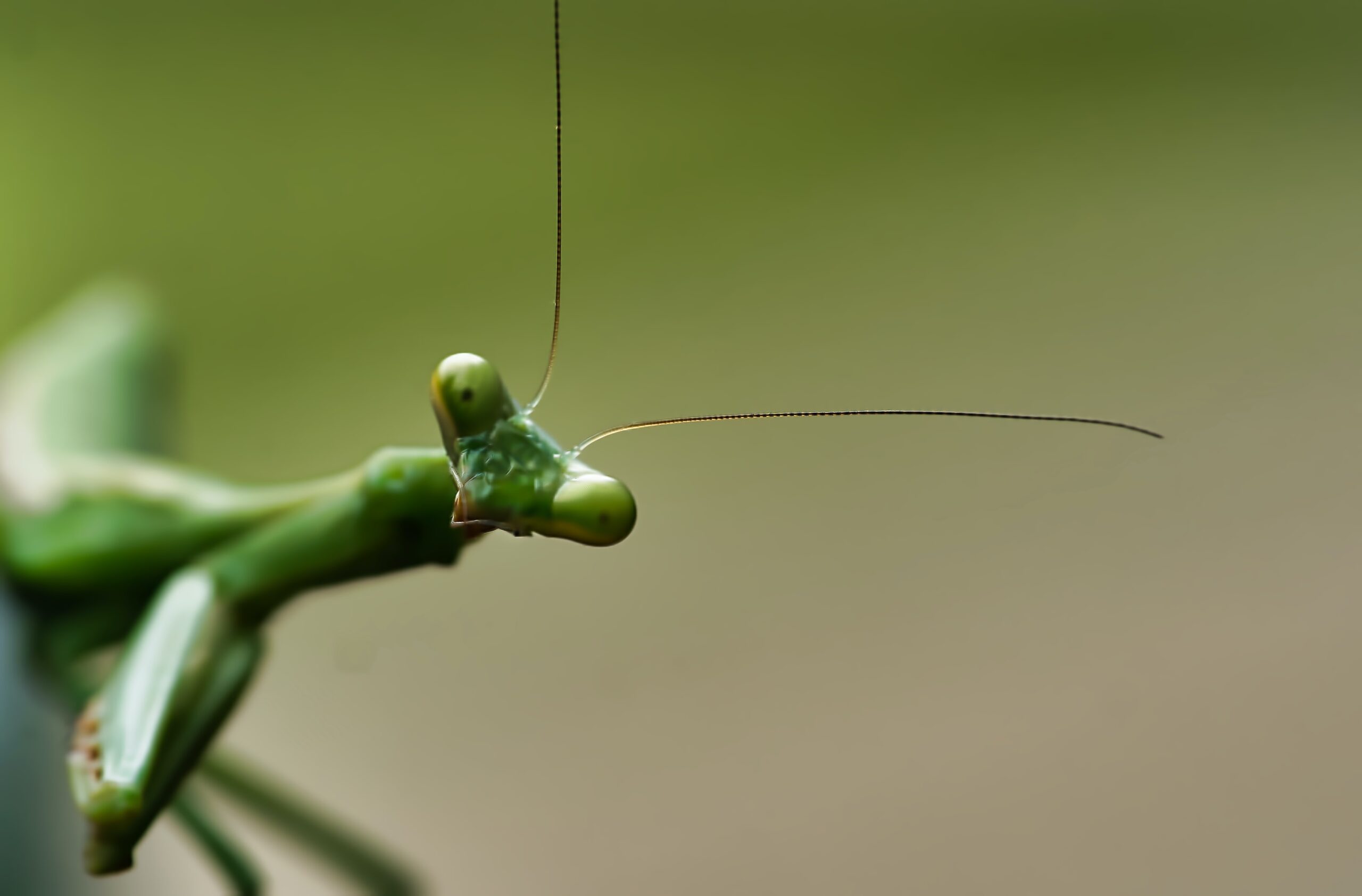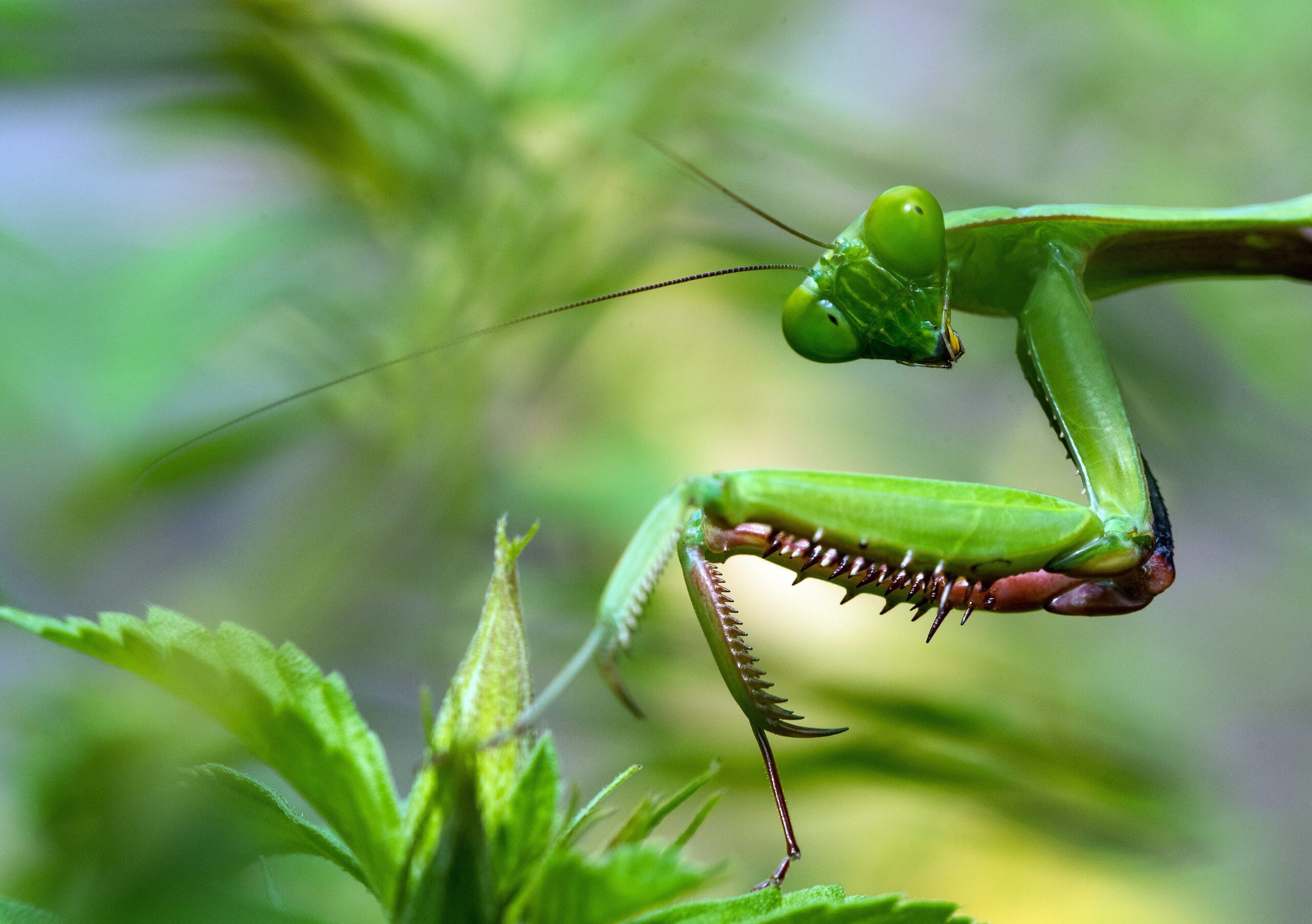
peek_a_boo-Praying Mantis poised on edge of leaf_KE-unsplash
peek_a_boo-Praying Mantis poised on edge of leaf_KE-unsplash
joshua-charles-praying mantis up close dark mottled green-unsplash
joshua-charles-praying mantis up close dark mottled green-unsplash
clint-patterson-eye view super close Praying Mantis-unsplash
clint-patterson-eye view super close Praying Mantis-unsplash

Why Study Praying Mantises Now?
Do you remember the first time you noticed a praying mantis? Perhaps it was perched on a blade of grass or camouflaged among leaves, motionless yet watchful, as though contemplating the universe. For many, encountering a praying mantis for the first time feels like a moment of quiet discovery. How could such a composed, alien-like creature exist among us?
Mantises belong to the order Mantodea, which includes over 2,400 species across 430 genera and 15 families. The largest family, Mantidae, encompasses the majority of these species. Found in temperate and tropical climates worldwide, mantises are renowned for their triangular heads with bulging, all-seeing eyes, elongated bodies, and folded forelegs adapted for capturing prey. This characteristic posture gives them their iconic name, “praying mantis.”
But the mantis is more than a biological marvel—it is a source of inspiration for art, culture, and combat.
Masters of Combat: Kung Fu and the Praying Mantis
The praying mantis’s grace and precision have inspired martial artists for centuries, particularly in developing Praying Mantis Kung Fu, one of the most distinctive styles in Chinese martial arts. Two main schools—Northern Praying Mantis and Southern Praying Mantis—emerged, each deeply rooted in the philosophies and movements of this remarkable insect.
Northern Praying Mantis Kung Fu
Northern Praying Mantis Kung Fu, developed during the late Ming or early Qing dynasty (circa 1600s), is attributed to Wang Lang, a legendary martial artist and Shaolin disciple. According to lore, Wang Lang created the style after observing the mantis’s hunting behavior. He was struck by the insect’s combination of speed, precision, and fluidity, which he adapted into a series of techniques.
Northern Praying Mantis emphasizes long-range attacks and dynamic movements. Key characteristics include:
• Hook Hands: Imitating the mantis’s raptorial forelegs, practitioners form their fingers into hooks for gripping, pulling, or redirecting an opponent’s movements.
• Rapid Combinations: Techniques are delivered in a series of quick, fluid strikes, resembling the mantis’s rapid attacks.
• Circular Motions: Movements often follow circular paths to trap and control opponents, reflecting the mantis’s ability to envelop prey with its legs.
The Northern Praying Mantis is also known for its agility and adaptability. Practitioners leap, dodge, and spin precisely, creating an elegant yet deadly fighting style.
Southern Praying Mantis Kung Fu
In contrast, Southern Praying Mantis Kung Fu developed in the southern provinces of China and is linked to the Hakka people. This style emphasizes close-range combat and the economy of motion, making it highly practical for confined spaces.
Key features of Southern Praying Mantis include:
• Short, Powerful Strikes: Practitioners deliver focused, explosive strikes designed to incapacitate opponents quickly.
• Sticky Hands: This technique involves maintaining constant contact with the opponent to sense their intentions and counter effectively, similar to the mantis’s tactile hunting strategies.
• Rooted Stances: Unlike the more mobile Northern style, the Southern Praying Mantis emphasizes strong, grounded stances, reflecting the mantis’s ability to hold its position while striking
Lessons from the Mantis for Modern Life
The martial arts inspired by the praying mantis are more than just combat techniques—they are philosophies that resonate with our modern challenges. In 2024, as we grapple with an increasingly complex and fast-paced world, the lessons of the mantis feel particularly relevant.
1. Adaptability: Just as the mantis tailors its approach to its environment, we can learn to adjust our strategies to fit changing circumstances.
2. Focus and Precision: The mantis’s deliberate movements remind us to act intentionally, avoiding wasted effort in our personal and professional lives.
3. Balance of Patience and Action: In nature or martial arts, the mantis teaches us the value of waiting for the right moment to act decisively.
Why Study the Praying Mantis?
Praying mantises are more than fascinating insects—they are teachers of patience, focus, and adaptability. From their evolutionary brilliance to their influence on human culture, mantises offer a lens through which to view the natural world and our place.
By studying the movements that inspired Praying Mantis Kung Fu, we honor the intricate beauty of these creatures and gain insights that can help us navigate the challenges of modern life with grace and resilience.
Perhaps it’s time to look closer at these sly, mesmerizing creatures and let their quiet wisdom guide us through the uncertainties of our age.
Do you remember the first time you saw a praying Mantis? Better yet, what about the first time you noticed the sly bugger blending in with the scenery, Praying Mantis attached to a tall blade of grass in an open field? Did it mesmerize your childhood eyes? Transcendental experience for this curious lad. I did not believe this modest, well-composed entity was from planet Earth. No other insect is truly like the praying mantis. Two schools of Martial Arts are based on the Praying Manti’s movements for how it mates, waits, stalks, and kills its prey.
Mantises are an order (Mantodea) of insects that contain over 2,400 species in about 430 genera in 15 families. The largest family is the Mantidae (“mantids”). Mantises are distributed worldwide in temperate and tropical habitats. They have triangular heads with bulging eyes supported on flexible necks. Their elongated bodies may or may not have wings, but all Mantodea have forelegs that are greatly enlarged and adapted for catching and gripping prey; their upright posture, while remaining stationary with forearms folded, has led to the common name praying mantis.
Praying Mantis Kung Fu Training Sequence And Concepts 七星螳螂功夫技法概念
It is said that supplicating mantis kung fu was produced in and around the Shaolin sanctuary hundreds of years prior by monks who observed the motions of the Praying Mantis insect in combat. The asking mantis bugs are exceptionally huge in China, they get very nearly 15 centimeters in length.
Here are the Best Praying Mantis Kung Fu Training Sequence And Concepts by Dr. Wu
Praying Manti Images from Unsplash.





